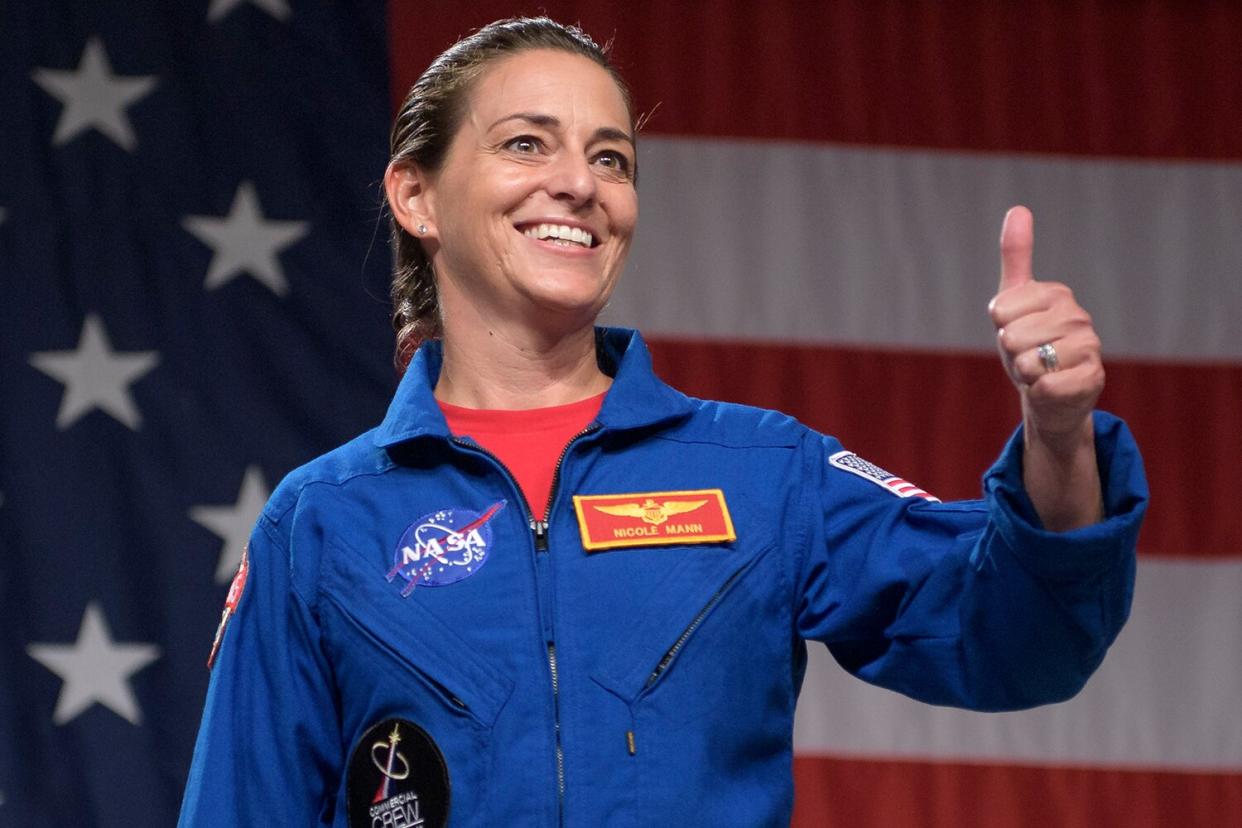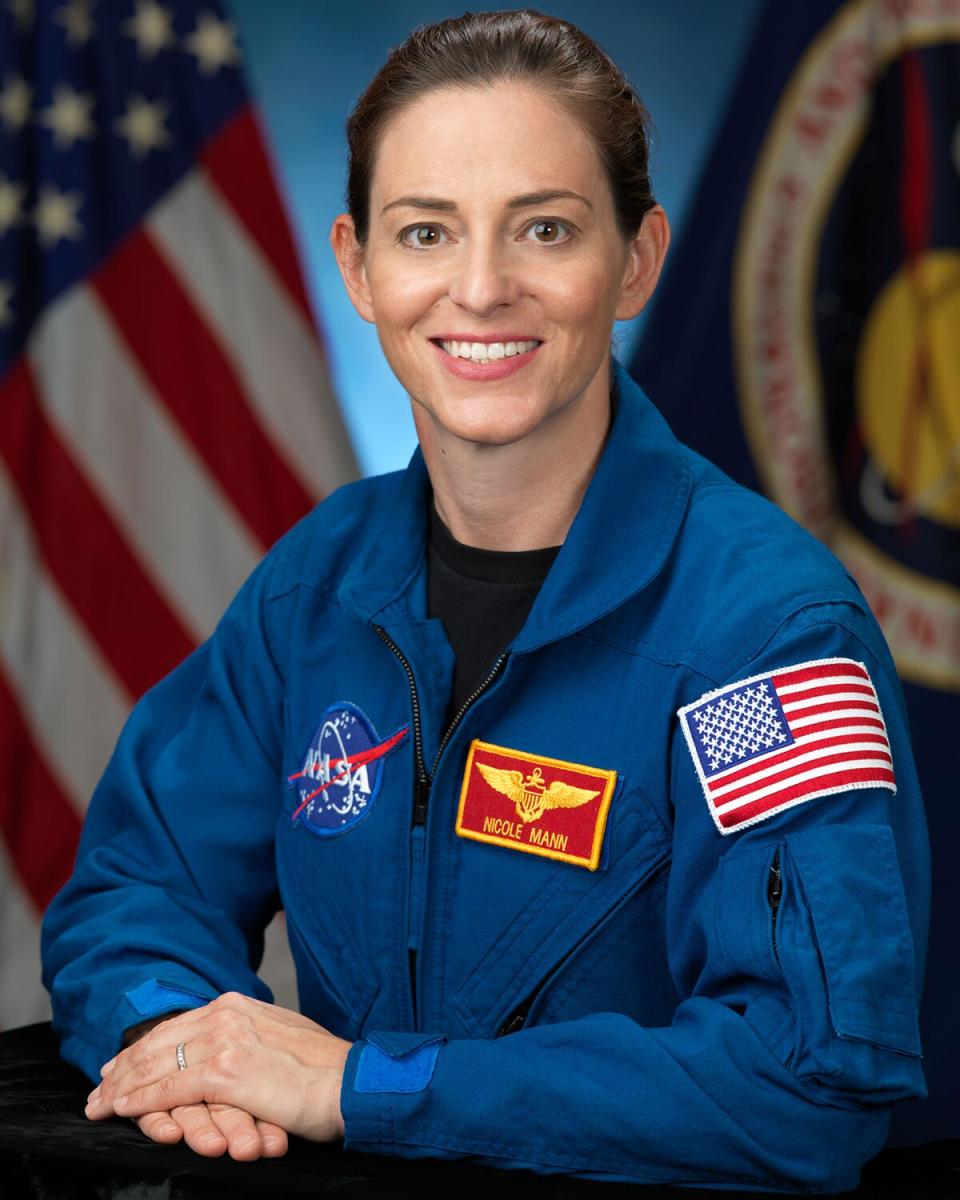Marine Pilot Set to Become First Native American Woman in Space: 'It Has Been a Long Journey'

- Oops!Something went wrong.Please try again later.
Bill Ingalls/NASA via Getty
NASA is set to send the first Native American woman to space when the next crew arrives at the International Space Station.
Astronaut Nicole Aunapu Mann is currently training for NASA's SpaceX Crew-5 mission, which is scheduled for liftoff on Oct. 3, according to Reuters and Mann's biography on NASA's website.
"It has been a long journey, but it's been so well worth it," Mann, 45, told Reuters about her career.
A member of the Wailacki of the Round Valley Indian Tribes in Northern California, Mann added that her upcoming mission has brought excitement and interest about NASA's work to "an audience that we don't get an opportunity to reach out to very often."
"I feel very proud," Mann said. "It's important that we celebrate our diversity and really communicate that specifically to the younger generation."
RELATED: NASA Scrubs Planned Launch for Artemis I Mission to the Moon Due to Engine Issue
Mann's incoming status as the first Native American woman in space follows John Herrington, the first Native American man in space, who traveled to the ISS in 2002, according to Reuters.
The SpaceX Crew-5 mission is "the fifth rotational mission to the International Space Station aboard the SpaceX Crew Dragon spacecraft," according to NASA. Beyond Mann, the mission will include NASA astronaut Josh Cassada, Japan's Aerospace Exploration Agency astronaut Koichi Wakata and Russian cosmonaut Anna Kikina, according to CBS News.

NASA
Mann, who was born in California, earned a mechanical engineering degree from the U.S. Naval Academy in 1999 and a master's degree from Stanford University from Stanford University in 2001, according to NASA. She is a Colonel in the Marine Corps who worked as a test pilot for the F/A - 18 Hornet and Super Hornet aircraft and was deployed on aircraft carriers twice during American combat operations in Iraq and Afghanistan, according to the space agency.
She joined NASA in June 2013.
Never miss a story — sign up for PEOPLE's free daily newsletter to stay up-to-date on the best of what PEOPLE has to offer, from juicy celebrity news to compelling human interest stories.
Mann's mission to the ISS is set to follow NASA'a Artemis I test rocket launch, which was delayed Monday due to an issue with one of the rocket's four engines. While it's unclear whether the Artemis I launch's delay will affect Mann's mission launch schedule, she said that her crew on the ISS will be working to prepare for the future success Artemis I promises for space exploration.
"What we're doing in low earth orbit not only trains the astronauts but provides the technical development and operational concepts that we're going to need to live (with a) sustained human presence on the moon and eventually take us to Mars," Mann told Reuters.
RELATED: NASA Offers to Fly Your Name Around the Moon on Upcoming Artemis I Mission
Mann told Reuters she will bring a dreamcatcher, a well-known and handmade Native American protective charm, to the ISS with her among other personal items to keep her company in space.
"I think it's important that we communicate this to our community," Mann told Indian Country Today on August 10 about the upcoming mission. "So that other Native kids, if they thought maybe that this was not a possibility or to realize that some of those barriers that used to be there are really starting to get broken down."

